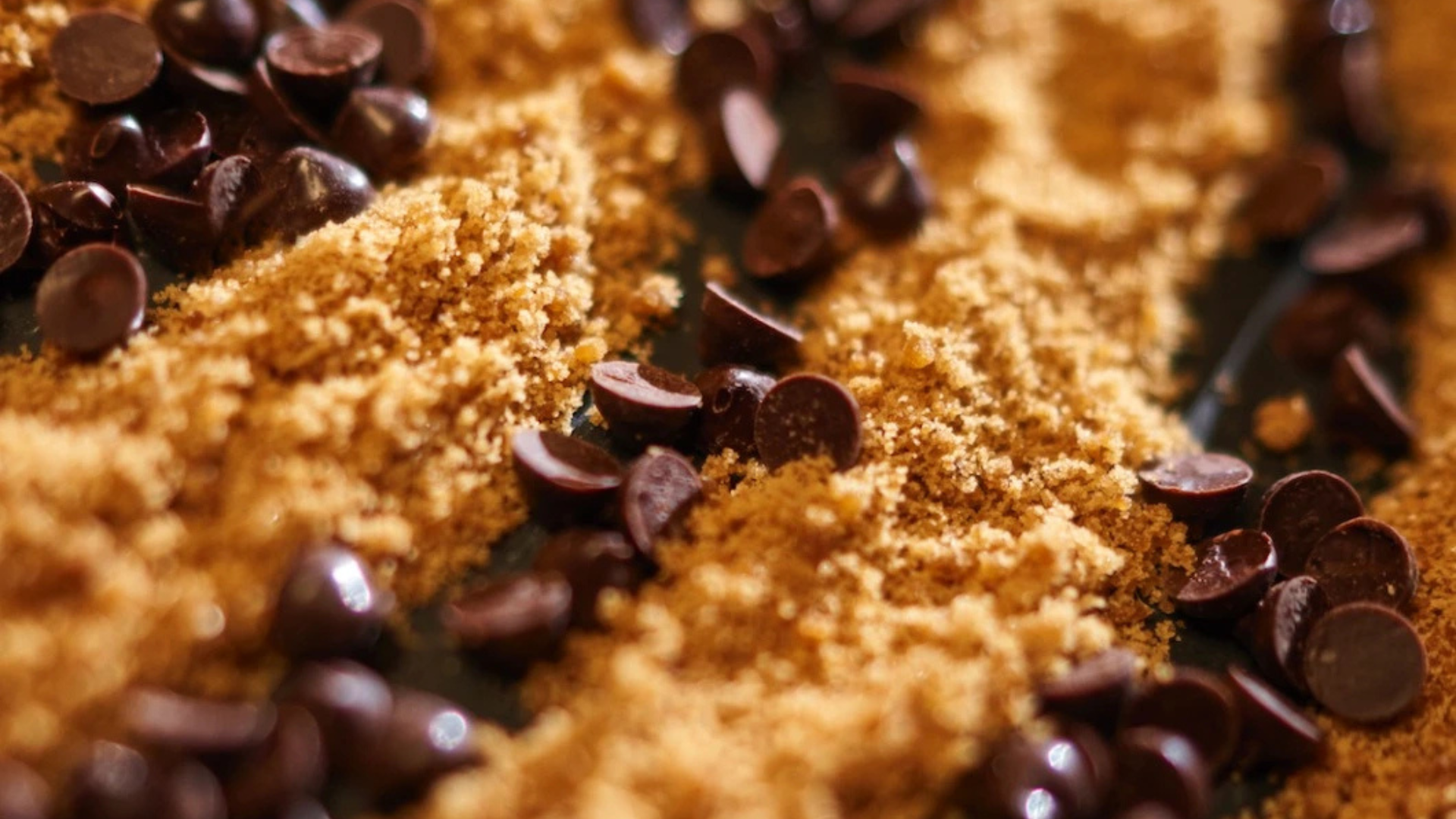| Refreshed and republished on September 29th, 2025 |
| This post was originally published on July 25th, 2022 has been enhanced and updated for accuracy and comprehensiveness. |
We have heard it many times, “A new generation of health-conscious consumers is reshaping the chocolate market. They still crave indulgence but increasingly look for options that feel better for their bodies and fit with mindful lifestyles”. For brands, this shift is both an opportunity and a challenge: how to reduce or replace sugar without losing the taste and texture that make chocolate irresistible.
| Want to know the biggest hurdles in developing sugar-reduced chocolate? Download our PDF guide on the 4 Challenges of Creating Better-for-You Chocolate to learn more. |
At the same time, today’s consumers expect:
- Transparency about what’s inside their chocolate.
- Consistency in taste and mouthfeel despite reformulation.
- Balanced indulgence — a treat that feels good without excess sugar.
For Brands, responding to these demands requires more than simply swapping sweeteners. It calls for a thoughtful formulation that preserves the signature flavour of the chocolate, a smooth mouthfeel that avoids the cooling or gritty sensations associated with some polyols, and compliance with labelling regulations for claims such as “no added sugar” or “sugar-free”.
| Table of contents: |
This blog explores what every chocolate brand should know about sugar-claim innovation today — from the latest trends and clean-label ingredients to the technical hurdles of creating better-for-you chocolate that doesn’t compromise on indulgence.
Sugar-Claim Trends in Chocolate Products
Over the past few years, chocolate has evolved beyond being simply a sweet treat. Health-conscious shoppers now read labels carefully, looking for products that feel both indulgent and aligned with their wellbeing goals. This has transformed sugar-related claims from niche statements into mainstream purchase drivers.

Key Sugar-Claim Market Shifts
- No-added-sugar claims are leading growth, showing an estimated ~6% CAGR in new confectionery launches worldwide since 2021.
- Reduced-sugar claims remain strong as brands aim to lower total sugar content without completely replacing it.
- Natural sweeteners — such as stevia, allulose, monk fruit, coconut sugar, and raw cane sugar — are gaining popularity due to their plant-based and clean-label appeal.
- Clean-label demand is now a top priority: consumers want ingredients they can recognise and pronounce, preferring formulations that avoid artificial sweeteners.
- Hybrid positioning is growing: brands highlight both lower sugar and added wellness benefits like prebiotic fibre (e.g., inulin) for digestive support.
What’s Driving the Shift in Sugar-Claims
- Mindful indulgence: Consumers seek chocolate that satisfies cravings yet feels balanced and responsible.
- Transparency and trust: Shoppers are drawn to front-of-pack sugar claims and short ingredient lists.
- Premiumisation of health: Willingness to pay more for chocolate that feels better-for-you, as long as indulgence isn’t compromised.
- Global sugar economics: Rising sugar costs and taxation on sugary products in some countries push brands to explore alternatives.
Implications for Brands
- Consider no-added-sugar couvertures as a gateway to the better-for-you market.
- Highlight recognisable sweeteners, such as coconut sugar or monk fruit, to meet clean-label expectations.
- Pair sugar claims with portion-controlled formats to deliver both emotional (responsible indulgence) and economic (value for money) appeal.
- Work closely with technical partners to balance sweetness, mouthfeel, and compliance with local regulations.
Interested in turning these trends into real products? Explore our sugar-reduced and better-for-you chocolate couvertures designed for mindful indulgence.
Natural Alternatives to Sugar in Chocolate
Natural sweeteners are doing more than just reducing sugar. They bring distinct flavours, functional benefits, and clean-label appeal that help brands stand out while meeting mindful-indulgence expectations. For Challenger Brands, understanding the strengths of each ingredient is key to creating chocolate that feels both wholesome and indulgent.

Key Natural Sweeteners and Their Benefits
- Coconut sugar
- Adds a subtle caramel-like flavour that enhances dark and milk chocolate.
- A less processed image that aligns with clean-label preferences.
- Contains trace minerals often associated with a more ‘natural’ positioning.
- Raw cane sugar
- Seen as a familiar, recognisable sweetener for consumers moving away from refined white sugar.
- Supports a more authentic product story without sacrificing traditional sweetness.
- Stevia blends (e.g., erythritol + stevia)
- Enable significant sugar reduction while maintaining sweetness.
- Require careful balancing to avoid the cooling sensation common with polyols.
- Often used in “reduced sugar” or “no added sugar” chocolate lines.
- Allulose
- Provides approximately 70% of the sweetness of sucrose with fewer calories.
- Performs well in keto-friendly and better-for-you chocolate.
- Offers a clean taste profile without the lingering bitterness of some sweeteners.
- Monk fruit extract
- A plant-derived sweetener with a clean flavour that complements premium chocolate.
- Suits low-sugar or calorie-conscious claims in niche segments such as sports or wellness snacks.
- Inulin (prebiotic fibre)
- Adds functional benefits by supporting digestive health.
- Improves mouthfeel and creaminess, counteracting dryness or cooling from polyols.
- Enables “source of fibre” or digestive-support claims alongside sugar reduction.
Formulation Tips for Challenger Brands
- Blend, don’t swap: Combining sweeteners often delivers the most balanced taste and texture.
- Mind the mouthfeel: Use cocoa butter or fibre (like inulin) to maintain creaminess and reduce the cooling effect of polyols.
- Align with local rules: Claims such as “no added sugar” or “sugar-free” are strictly regulated and vary by market.
- Test consumer response early: Pilot small runs to validate acceptance of both taste and labelling before scaling.
Technical Challenges in Sugar-Reduced Chocolate
Reducing or replacing sugar in chocolate is not as simple as swapping one ingredient for another. Sugar contributes far more than sweetness — it influences texture, viscosity, structure, and shelf stability. When it’s removed or replaced, the product’s performance can shift in ways that impact quality and consumer acceptance.

Key Challenges Brands Face in Sugar-Reduced Chocolate
- Maintaining mouthfeel and creaminess
- Sugar crystals add body and structure; without them, chocolate can feel thin or dry.
- Polyols (e.g., erythritol) may create a cooling effect or gritty texture if not balanced properly.
- Managing sweetness perception
- Natural sweeteners, such as stevia or monk fruit, can have a bitterness or aftertaste, requiring precise blending to maintain a clean chocolate flavour.
- Achieving proper crystallisation and viscosity
- Sugar influences the flow properties of chocolate, affecting moulding, enrobing, and tempering.
- Incorrect viscosity can lead to production challenges, such as streaking or brittle shells.
- Ensuring shelf life and stability
- Sugar acts as a preservative; reducing it may increase moisture sensitivity or increase the risk of microbial contamination.
- Reformulated products often require adjusted packaging or water activity controls to prevent spoilage.
- Navigating regulatory compliance
- Claims such as “no added sugar” or “sugar-free” differ by region and require strict adherence to local definitions and testing protocols.
Reducing sugar without losing indulgence requires more than just swapping sweeteners. Download the free PDF guide to the 4 key challenges and how to solve them
Actionable Tips for Brands Developing Sugar-Reduced Chocolate
- Work with experienced R&D partners who understand both chocolate behaviour and the performance of alternative sweeteners.
- Use cocoa butter or fibres such as inulin to replace bulk and maintain creaminess.
- Blend sweeteners strategically to balance taste, minimise aftertaste, and reduce cooling effects.
- Pilot small production runs to validate flavour, texture, and shelf-life performance before scaling up.
- Stay aligned with labelling laws early in development to avoid reformulation delays.
The Rise of “No Added Sugar” and Clean-Label Chocolate Demand
In recent years, “no added sugar” has grown from a niche claim to a central selling point for chocolate products. Consumers no longer see it as a compromise — instead, it signals transparency, quality, and a more balanced approach to indulgence.
At the same time, the clean-label movement has strengthened, with shoppers increasingly drawn to products that use ingredients they can recognise, pronounce, and trust.
“No Added Sugar” and Clean-Label Demand Market Insights
- “No added sugar” is the fastest-growing sugar claim in chocolate and confectionery, with an approximate 6% CAGR in global launches since 2021.
- Growth is evident in premium and better-for-you segments, where brands emphasise mindful indulgence rather than diet restriction.
- Clean-label expectations now influence ingredient selection: consumers prefer plant-based sweeteners and avoid artificial additives or highly processed sugars.
- Front-of-pack claims around sugar content are key purchase drivers, especially for younger demographics who actively read labels.
What This Means for Brands
- Highlight “no added sugar” claims where relevant, making sure the product meets regional regulatory definitions.
- Pair sugar claims with short, recognisable ingredient lists to build consumer trust.
- Leverage natural sweeteners (e.g., coconut sugar, monk fruit, allulose) that support both health perceptions and flavour experiences.
- Consider transparent storytelling about ingredient sourcing to strengthen brand credibility.
- Position “no added sugar” as part of a mindful indulgence narrative — not as a loss of pleasure but as a better balance.
How Brands Can Innovate in Sugar-Reduced Chocolate
For Challenger Brands, sugar-reduced chocolate is more than a product trend — it’s an opportunity to win trust, meet modern health expectations, and stand out in a crowded market.
Innovation often starts small: testing, iterating, and working alongside partners who understand both chocolate behaviour and alternative sweeteners.

Practical Steps to Drive Innovation
- Start with limited-run launches
- Pilot “no added sugar” or reduced-sugar products in small or seasonal formats to test consumer response before scaling up.
- Collaborate on formulation early
- Co-create with technical partners to balance sweetness, mouthfeel, viscosity, and compliance.
- Engage partners who can provide shelf-life testing, packaging guidance, and regulatory support.
- Combine sugar claims with other benefits
- Pair “no added sugar” with portion control, added fibre (e.g., inulin), or plant-based positioning for greater relevance.
- Prioritise taste above all
- Use cocoa butter, blends of natural sweeteners, and fibres to maintain creaminess and flavour consistency.
- Avoid formulations that compromise the indulgent experience.
- Communicate simply and clearly
- Highlight recognisable sweeteners and clean labels on packaging.
- Frame the message as “mindful indulgence” — a balanced, modern chocolate experience.
Key Takeaway for BrandsInnovation in sugar-reduced chocolate is most successful when it’s consumer-tested, technically sound, and transparently communicated. With the right partner, Challenger Brands can launch products that feel healthier without losing what makes chocolate a treat. Reducing sugar in chocolate comes with challenges — from taste to texture — but it also unlocks new possibilities for brands ready to innovate. |
























